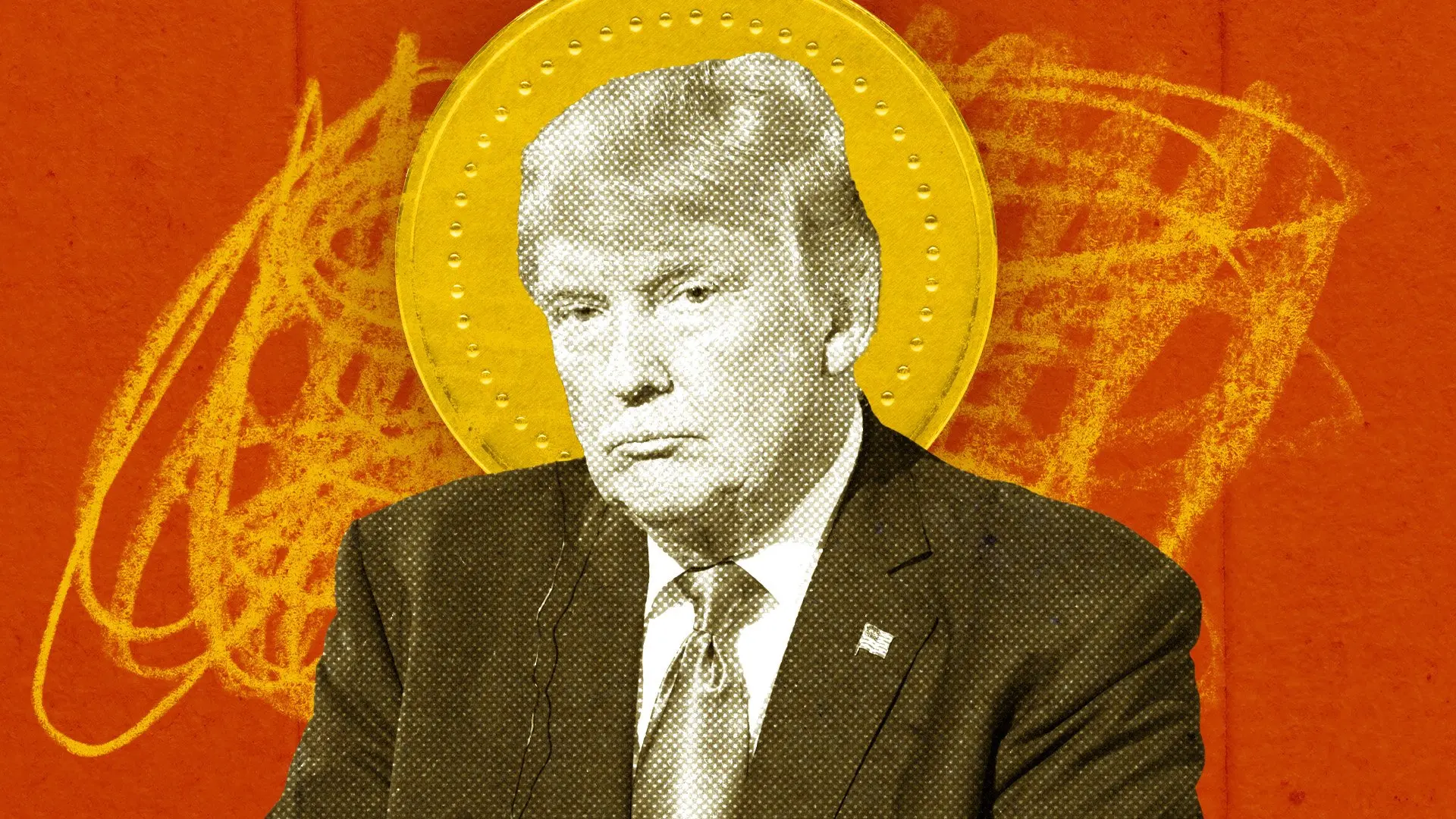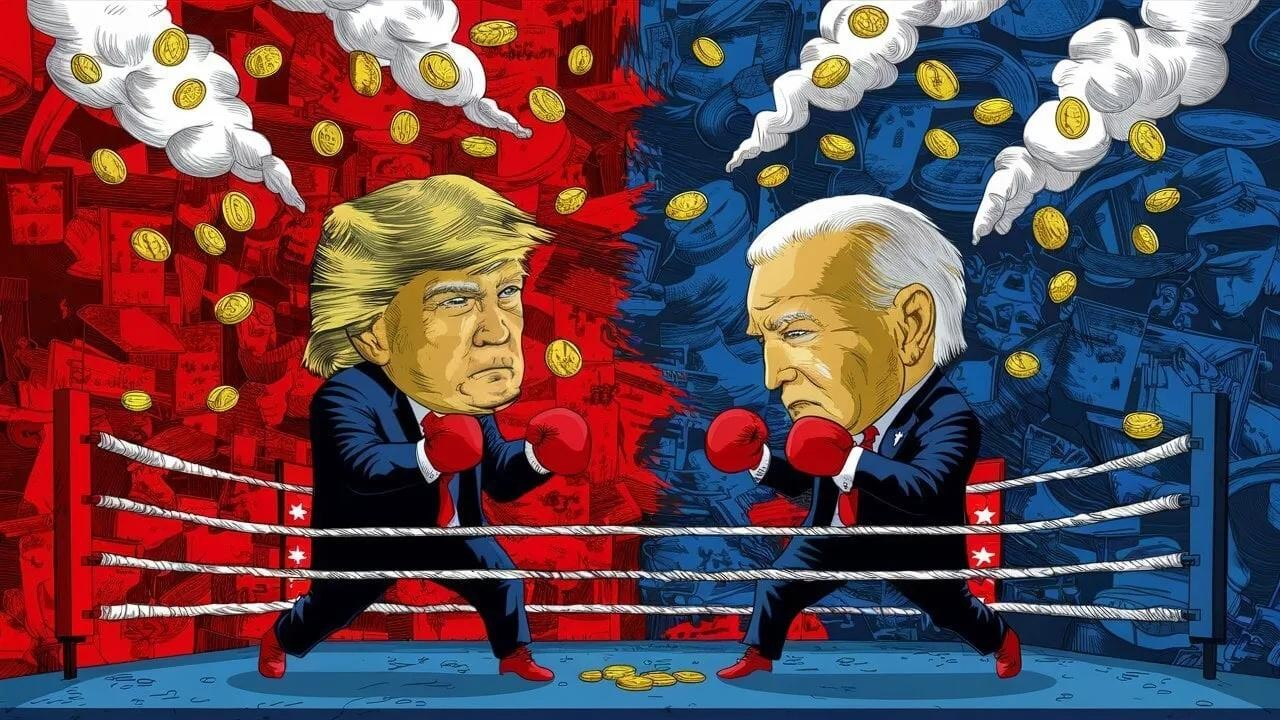Trump vs. Biden | Key Cryptocurrency Differences & What’s at Stake
Cryptocurrency has become a pivotal issue in financial policy and regulation, with distinct approaches emerging from different political leaders. Donald Trump and Joe Biden, the 45th and 46th Presidents of the United States respectively, have showcased contrasting perspectives and policies towards cryptocurrency. Cryptocurrency and Blockchain technology is a hot topic leading into the Presidential debates of 2024. This article delves into their differing viewpoints and actions, reviewing Trumps cryptocurrency policies during his term in office while comparing them to Bidens current approach.
Historical Context
Donald Trump’s administration displayed a clear skepticism towards cryptocurrency. Trump himself expressed disdain for Bitcoin and other digital currencies, labeling them as risky and unreliable. Meanwhile Joe Biden’s entry into the presidency did not immediately clarify his stance on cryptocurrency. Initially, his administration focused more on broader economic policies, leaving crypto regulations somewhat in limbo.
Trump’s administration was characterized by a cautious regulatory approach. Agencies under his administration, such as the Securities and Exchange Commission (SEC), were rigorous in enforcing existing financial laws on crypto ventures. Under Biden, there has been a noticeable shift towards a more structured regulatory framework. His administration has advocated for clear guidelines to ensure consumer protection and market stability in the crypto space.
Financial Stability Concerns and Legal Enforcement

Trump and his team often voiced concerns about the potential for cryptocurrencies to destabilize traditional financial systems. This apprehension led to stringent scrutiny of digital currencies. Biden’s administration acknowledges the potential risks but emphasizes the importance of integrating cryptocurrencies into the financial system safely. This includes assessing systemic risks and implementing measures to mitigate them.
During Trump’s tenure, there was a notable crackdown on illegal activities associated with cryptocurrency. His administration prioritized targeting fraud, money laundering, and other illicit uses of digital currencies. Biden’s administration continues to combat illegal activities but places additional focus on international cooperation. This approach aims to create a more robust global framework for combating crypto-related crimes.
Taxation Policies
Under Trump, there was a push to classify cryptocurrencies clearly for tax purposes, but there was little change in the tax code specific to digital currencies. The IRS did, however, begin asking about crypto holdings on tax forms. Biden’s administration has taken a more proactive stance, seeking to close tax loopholes related to cryptocurrencies. There is a concerted effort to ensure that all crypto transactions are reported and taxed appropriately.
Innovation and Technology

Trump’s administration exhibited skepticism towards the technological promises of cryptocurrencies. There was limited support for blockchain innovation, with a focus instead on traditional financial technologies. In contrast, Biden’s administration appears more open to the potential of blockchain and cryptocurrencies. There is encouragement for innovation, provided it aligns with regulatory standards and promotes economic growth.
Market Regulation
Trump’s market regulation was often reactive, responding to market developments as they occurred. This approach sometimes led to a fragmented regulatory landscape. Biden aims for a more proactive regulatory stance, seeking to anticipate market trends and implement regulations that can guide the growth of the crypto market sustainably.
Federal Reserve and Cryptocurrency
Under Trump, the Federal Reserve was generally cautious about integrating cryptocurrencies into the broader financial system. There was significant hesitation to endorse any form of digital currency issued by the central bank. Biden’s administration is more open to exploring a Central Bank Digital Currency (CBDC). The Federal Reserve under Biden is actively researching and considering the implications of issuing a digital dollar.
Public Statements

Trump has been vocal in his criticism of cryptocurrencies, calling Bitcoin a “scam” and expressing concerns about its use for illegal activities. His statements often reflected his administration’s cautious stance. Meanwhile Biden’s public statements on cryptocurrencies have been more measured. He acknowledges both the potential benefits and risks, advocating for balanced regulation.
Trump’s administration often adopted a unilateral approach to international cooperation, focusing on U.S. policies and less on international cooperation. This led to inconsistent global regulatory standards. Biden’s administration emphasizes international cooperation to create cohesive regulatory frameworks. This involves working with global financial institutions and other countries to regulate cryptocurrencies effectively.
Industry Engagement
There was limited engagement with the crypto industry during Trump’s presidency. The administration’s focus was more on enforcement and regulation than on dialogue and collaboration. Meanwhile Biden’s team actively engages with industry stakeholders. This engagement aims to understand the needs and concerns of the crypto community while shaping effective regulatory policies.
Consumer Protection and Environmental Impact
Trump’s administration implemented strict measures to protect consumers from fraud and scams related to cryptocurrencies. However, these measures were often seen as heavy-handed by industry participants. Biden’s administration seeks to balance consumer protection with market innovation. This involves creating safeguards without stifling the growth and potential of the crypto industry.
Trump’s administration showed little concern for the environmental impact of cryptocurrency mining. There was minimal regulatory action addressing the carbon footprint of crypto activities. Biden’s administration is more environmentally conscious. There is a push to address the environmental impact of crypto mining, including promoting sustainable practices within the industry.
Monetary Policy and Innovation Incentives
Trump’s approach to monetary policy was conservative, with a preference for maintaining traditional financial structures. Cryptocurrencies were often viewed as a threat to monetary stability. Biden’s administration exhibits more flexibility in monetary policy, exploring how cryptocurrencies could coexist with traditional financial systems. This includes discussions on how digital currencies might impact monetary policy and financial stability.
Trump’s administration was skeptical of the innovation claims made by the crypto industry. There were few incentives or support structures for blockchain and crypto startups. Biden’s administration supports technological innovation in the crypto space, provided it aligns with regulatory and economic goals. There are initiatives to encourage startups and integrate blockchain technology in various sectors.
Financial Inclusion and Cryptocurrency Adoption

Trump’s administration did not prioritize cryptocurrency as a tool for financial inclusion. Efforts were mainly directed towards traditional banking reforms. Biden’s administration views cryptocurrency as a potential tool for financial inclusion, particularly in underserved communities. There are initiatives to explore how digital currencies can enhance access to financial services.
Trump’s administration was reluctant to promote widespread cryptocurrency adoption. The focus remained on caution and containment rather than encouragement. Meanwhile Biden’s administration is more open to considering the benefits of cryptocurrency adoption, with a focus on integrating digital currencies into the financial system in a controlled and regulated manner.
Trump’s administration is hesitant to explore the concept of a digital dollar, viewing it as unnecessary and potentially disruptive while Biden’s administration is actively researching the feasibility of a digital dollar. This includes studying the potential benefits and risks, as well as the implications for the global financial system. The exploration of a CBDC could see a heated exchange in the upcoming debate in June.
Cross-Border Payments and Cybersecurity Concerns
Trump’s administration favored traditional methods for cross-border payments, showing little interest in leveraging cryptocurrencies for this purpose whereas Biden’s administration is exploring how cryptocurrencies can modernize cross-border payments, making them faster, cheaper, and more efficient.
Trump’s administration focused heavily on the security risks associated with cryptocurrencies, implementing measures to protect against hacking and cyber threats. The Biden’s administration continues to prioritize cybersecurity but also seeks to enhance security measures through innovation and international cooperation.
Impact on Traditional Banking
Trump’s policies often aimed to protect traditional banking institutions from the disruptive potential of cryptocurrencies. Biden’s administration is working towards integrating cryptocurrencies with traditional banking systems, fostering a collaborative rather than adversarial relationship.
Legal Clarity
There was significant legal ambiguity regarding cryptocurrencies under Trump’s administration, leading to confusion and regulatory uncertainty. Will this change if he is re-elected?
Biden’s administration aims to provide clearer legal guidelines for cryptocurrencies, reducing uncertainty and promoting a more stable regulatory environment.
Education and Public Awareness
Trump’s administration made limited efforts in its previous term in office to educate the public about cryptocurrencies, focusing more on enforcement than education. That will have to change if he is elected for a second term. Biden’s administration has been launching initiatives to increase public awareness and understanding of cryptocurrencies, aiming to foster informed and responsible usage.
Industry Collaboration
Trump’s administration prioritized enforcement over collaboration with the crypto industry, leading to a somewhat adversarial relationship. Biden’s administration seeks to collaborate with industry leaders to shape effective policies and regulations, fostering a more cooperative environment.
Fraud Prevention
Trump’s administration implemented stringent measures to prevent fraud in the crypto space, often resulting in heavy-handed enforcement actions. Biden’s administration continues to prioritize fraud prevention but seeks a balanced approach that does not stifle innovation.
Market Transparency
Trump’s administration often took reactive measures to ensure market transparency, responding to issues as they arose. Biden’s administration is working proactively to enhance market transparency, implementing regulations to ensure clarity and fairness in crypto transactions.
Conclusion
Contrasting Visions
Donald Trump and Joe Biden have markedly different approaches to cryptocurrency. Trump’s administration was characterized by skepticism and cautious regulation, while Biden’s administration is more open to innovation and integration within a structured regulatory framework.
Future Prospects
As the world of cryptocurrency continues to evolve, the differing policies and perspectives of these two leaders will significantly influence the future of digital currencies in the United States and beyond. Biden’s proactive and inclusive approach may pave the way for a more integrated and regulated crypto market, while Trump’s legacy of caution and skepticism will continue to shape discussions on financial stability and security.
One thing is for sure, the crypto world will be tuning in during the coming months as Biden and Trump go head to head in their debates. And their respective crypto policies will no doubt be challenged by the opposing candidate.

